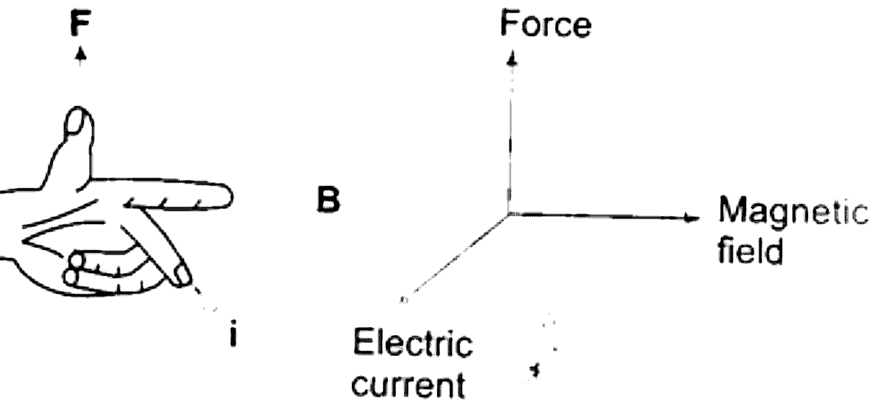Magnetism & Important Facts | Famous Books for UPSC Exam (Summary & Tests) PDF Download
Magnetism: Unveiling the Secrets of Magnets
Magnetism revolves around the study of magnets and their properties. Let's take a closer look at the fundamental aspects of magnets:
Magnets
- A magnet possesses the unique ability to attract iron objects.
- Natural magnets, such as magnetite or lodestone (an iron ore), occur in nature.
- Artificial magnets, including bar magnets and horseshoe magnets, are created by human intervention.
- A freely suspended magnet aligns itself in the North-South direction.
- Like magnetic poles repel each other, while unlike magnetic poles attract.
- An electromagnet refers to a current-carrying coil containing a soft iron core. It finds applications in various devices like electric bells, telegraph receivers, telephone diaphragms, transformers, dynamos, and more.
- Permanent magnets are crafted from steel, while temporary magnets or electromagnets are made from soft iron. Steel is difficult to magnetize but retains its magnetism once magnetized. On the other hand, soft iron can be magnetized or demagnetized easily.
Properties of Magnet
Magnetism exhibits several intriguing properties:
Attractive Property
- A magnet can attract small magnetic substances such as iron, steel, cobalt, and nickel. The attraction is strongest at the poles.
- Unlike poles attract each other, while like poles repel.
Directive Property
- When freely suspended, a magnet aligns itself approximately along the geographical North-South line.
Magnetic Poles
- If a magnet is cut into two equal parts transverse to its length, the North and South poles of the magnet remain connected.
Magnetic Field: Unraveling the Mysteries
- The region surrounding a magnet or a current-carrying conductor, wherein its magnetic effect is experienced, is known as the magnetic field.
- Magnetic lines of force, imaginary lines within the magnetic field, indicate the path a magnetic North pole would follow if allowed to move freely.
- A tangent drawn at any point of a magnetic line of force indicates the direction of the magnetic field at that specific point.
- The magnetic flux linked with a surface is equivalent to the total number of magnetic lines of force passing through that surface perpendicularly. Its unit of measurement is Weber.
- Magnetic flux (f) = A * B * cos(q), where A represents the area, B signifies the magnetic field strength, and q denotes the angle between the area vector and the magnetic field.
Magnetic Force: Power in Motion
Understanding the magnetic force on moving charges and current-carrying conductors is essential. Let's explore its dynamics:
Magnetic Force on a Moving Charge
The magnetic force acting on a moving charge (q) within a magnetic field (B) is given by F = B * q * v * sin(q), where v represents the velocity vector and q signifies the angle between the direction of motion and the magnetic field.
Magnetic Force on a Current-Carrying Conductor
When a conductor carrying current (l) is placed in a magnetic field (B), the magnetic force acting on it is defined by F = B * i * l * sin(q), where i denotes the electric current flowing through the conductor, and q represents the angle between the current direction and the magnetic field.
The direction of this force can be determined using Fleming's left-hand rule, which provides a simple visual aid.

Earth's Magnetism: A Natural Phenomenon
- The Earth possesses its own magnetic field, akin to that of a magnetic dipole positioned at the Earth's core. The magnetic North pole is situated near the geographic North, while the magnetic South pole is located near the geographic South.
- Earth's magnetic field diverts charged particles originating from space toward its poles, serving as a protective shield for living beings.
Magnetic Compass and Other Notable Terms
- A magnetic compass refers to a magnetic needle that consistently points in the North-South (N-S) direction, aiding in navigation.
- Neutral points are regions within a magnetic field where the net magnetic field strength is zero.
- Magnetic storms are local disturbances in the Earth's magnetic field that can potentially disrupt telecommunication systems. These storms are often caused by an influx of charged particles emanating from the sun.
Additional Applications: Coils, Galvanometers, and More
- Coils in Uniform Magnetic Field: When a coil, comprised of N turns with an area of cross-section A, carries current l within a uniform magnetic field B, a torque is exerted on it, inducing rotational motion.
- Moving Coil Galvanometer: This device is utilized to detect the presence and direction of current in a circuit. The interplay between torques on a coil and a phosphor bronze strip enables accurate readings.
- Ammeter and Voltmeter: An ammeter measures electric current and is connected in series, while a voltmeter gauges potential difference and is connected in parallel. Converting a galvanometer into an ammeter involves connecting a low resistance in parallel, whereas conversion into a voltmeter necessitates a high resistance in series. Shunts can be added in parallel to the load resistance to regulate the current flow.
Magnetic Substances: Magnetic substances are classified into three types:
- Paramagnetic Substances: These substances weakly magnetize in the direction of a strong magnetic field. Examples include aluminum, platinum, chromium, manganese, and solutions of iron and nickel salts. Their magnetism decreases with rising temperature.
- Diamagnetic Substances: Diamagnetic substances weakly magnetize in the opposite direction to a strong magnetic field. Gold, silver, zinc, copper, mercury, water, alcohol, air, and hydrogen are examples of diamagnetic substances. Their magnetism remains constant regardless of temperature variations.
- Ferromagnetic Substances: These substances strongly magnetize in the direction of a magnetic field. Iron, nickel, and cobalt are notable examples. Ferromagnetic materials lose their magnetism with increasing temperature, and at a specific temperature called the Curie temperature, paramagnetic substances transform into diamagnetic ones. According to Curie's law, the magnetic susceptibility of a paramagnetic substance (Xm) is inversely proportional to temperature (T).
|
1179 videos|2219 docs|849 tests
|
















